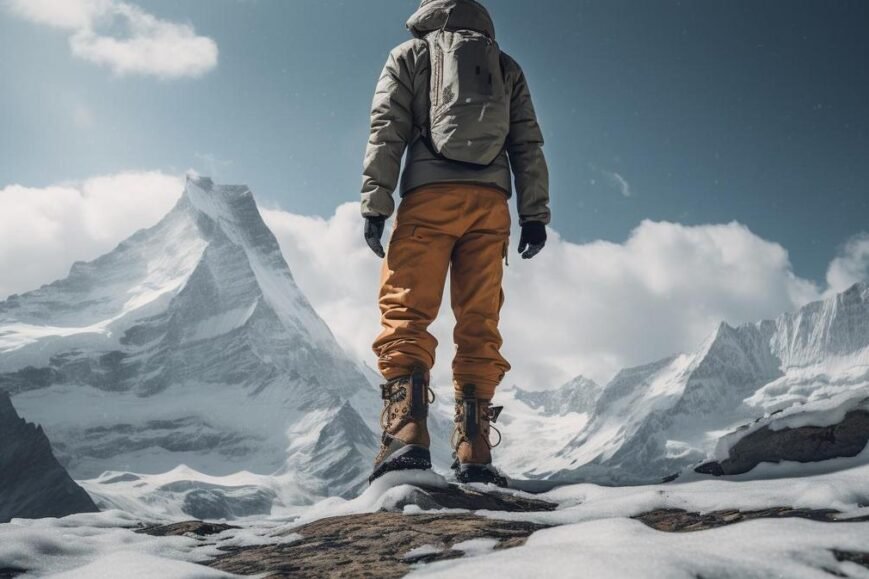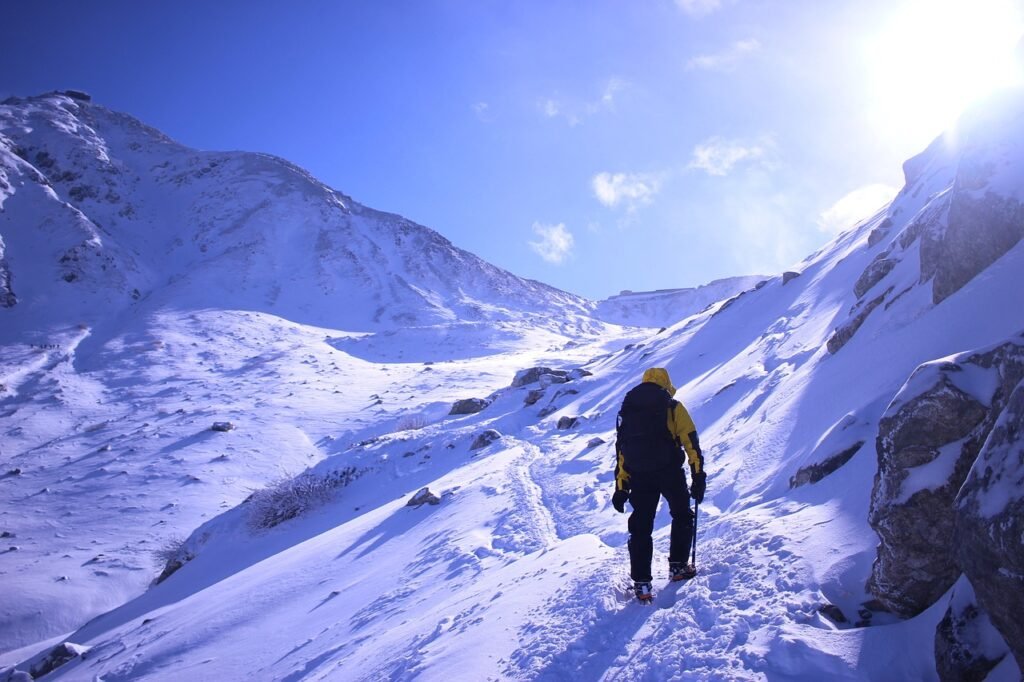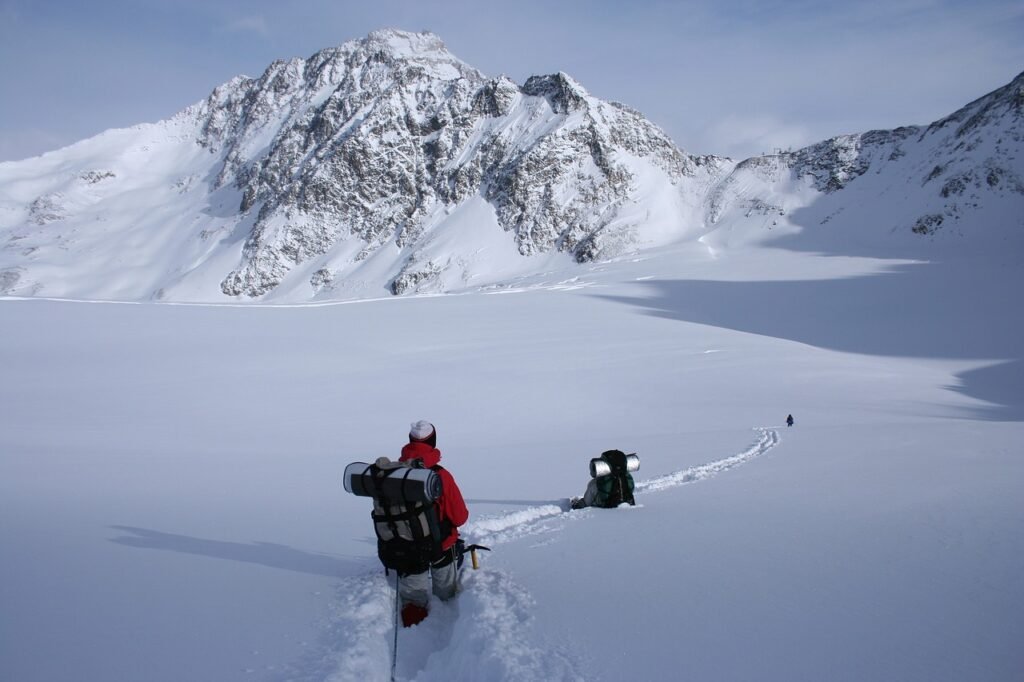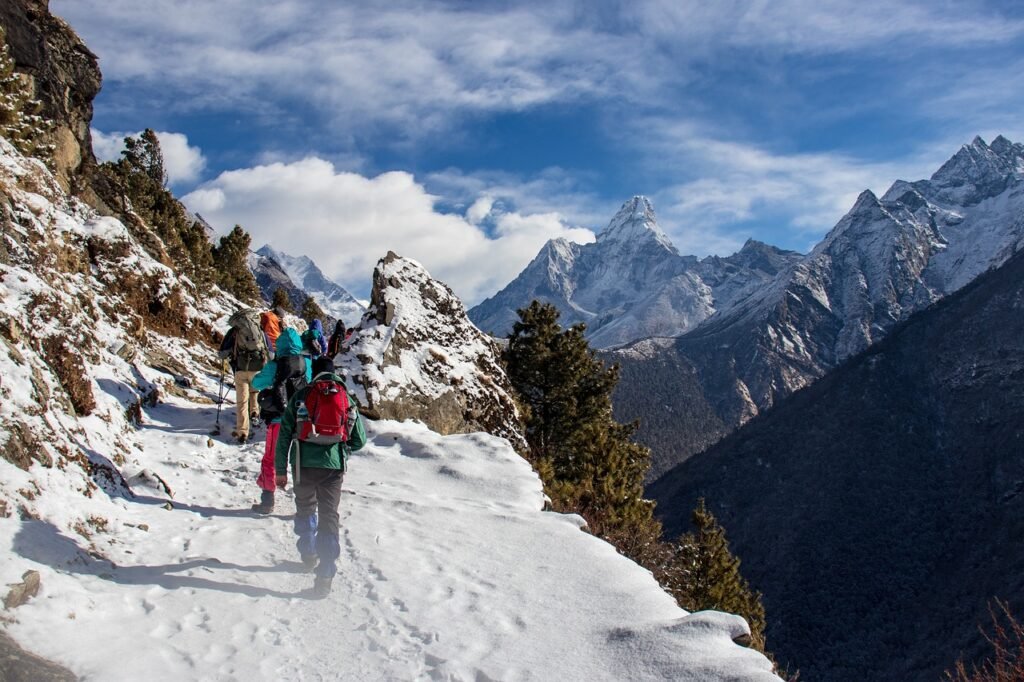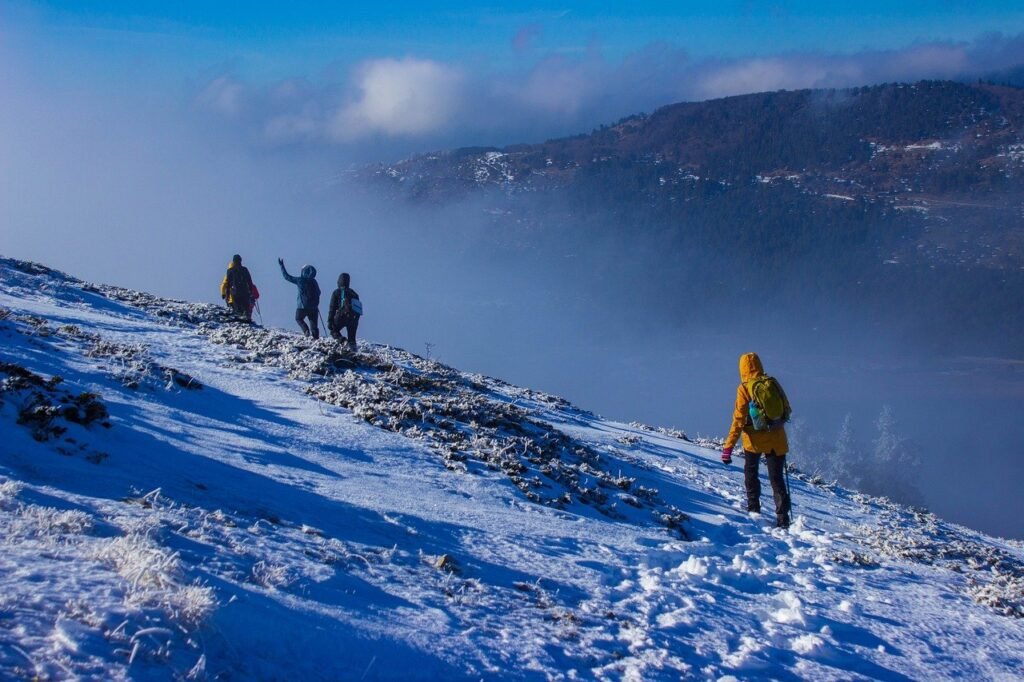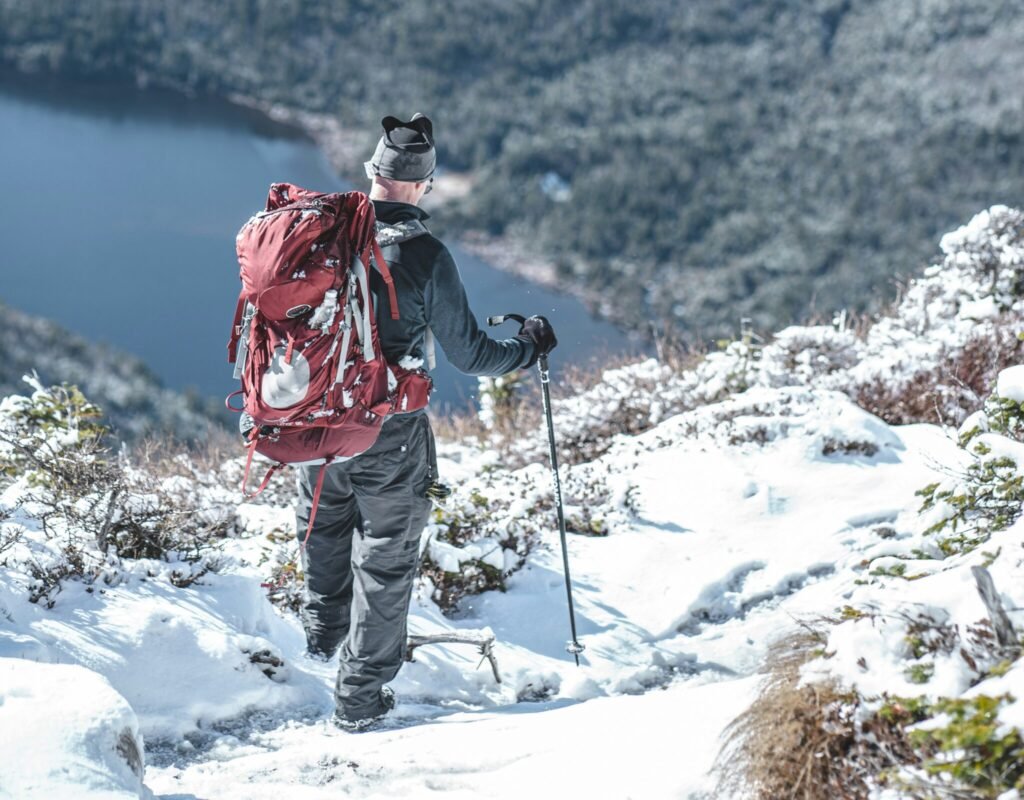Embarking on a winter overnight hike can be an exhilarating and rewarding experience, but it requires careful planning and preparation. The cold weather and snowy conditions demand specific gear to ensure your safety, comfort, and enjoyment. This comprehensive guide will take you through the essential gear and packing tips for a winter overnight hike, helping you make the most of your adventure in the winter wilderness.
TL;DR
- Planning and preparation are crucial for a winter overnight hike
- Familiarize yourself with the unique challenges of the winter environment
- Be prepared for unpredictable weather conditions and limited daylight hours
- Understand potential hazards such as hidden obstacles and icy patches
- Research and gather information about trail conditions before hiking
- Educate yourself about avalanche safety in mountainous regions
- Choose the right backpack with ample storage capacity and a lightweight yet durable design
- Consider the suspension system and accessibility of the backpack
- Recommended backpacks include Osprey Atmos AG 65, Deuter Aircontact Lite 50+10, and Gregory Baltoro 65
- Dress appropriately with base layers, insulating layers, and outer layers
- Opt for moisture-wicking materials like merino wool or synthetic fabrics
- Use fleece jackets, down jackets, or synthetic insulated jackets for warmth
- Wear waterproof and windproof jackets made with breathable fabrics
- Select hiking pants made from durable and water-resistant materials
- Invest in high-quality, moisture-wicking socks for warm and dry feet
Understanding the Winter Environment
Before embarking on a winter overnight hike, it is crucial to familiarize yourself with the unique challenges and considerations of the winter environment. This section will provide valuable information on various aspects such as weather conditions, daylight hours, potential hazards, trail conditions, and avalanche safety. Understanding these factors will not only enhance your knowledge but also enable you to make informed decisions when selecting gear and planning your route.
Weather Conditions
Winter weather can be unpredictable and harsh, so it is essential to be prepared for a wide range of conditions. Snowfall, freezing temperatures, strong winds, and limited visibility are common characteristics of the winter season. It is crucial to check the weather forecast before your hike and be aware of any potential storms or extreme weather conditions that may arise. Dressing appropriately and carrying the right gear can help you stay comfortable and safe in challenging weather conditions.
Daylight Hours
During the winter months, daylight hours are significantly shorter compared to other seasons. It is important to plan your hike accordingly and be mindful of the limited daylight available. Start your hike early in the day to maximize daylight hours and ensure you have enough time to reach your destination before darkness falls. Carrying a headlamp or flashlight is also essential in case you find yourself hiking in low-light conditions.
Potential Hazards
Winter hiking presents unique hazards that may not be present during other times of the year. Snow-covered trails can hide obstacles such as rocks, tree roots, or uneven terrain, increasing the risk of slips, trips, and falls. Additionally, icy patches and frozen water bodies can pose a significant danger if not approached with caution. It is crucial to wear appropriate footwear with good traction and use trekking poles for added stability. Being aware of potential hazards and taking necessary precautions can help prevent accidents and injuries.
Trail Conditions
Winter trail conditions can vary greatly depending on factors such as recent snowfall, temperature fluctuations, and trail maintenance. It is essential to research and gather information about the specific trail you plan to hike. Check with local authorities, park rangers, or experienced hikers for updates on trail conditions. This will help you determine if any sections of the trail are impassable or require additional equipment, such as snowshoes or crampons, to navigate safely.
Avalanche Safety
In mountainous regions, the risk of avalanches is a significant concern during the winter season. Avalanches can be triggered by various factors, including snowfall, wind, temperature changes, and slope angle. It is crucial to educate yourself about avalanche safety and understand how to assess the risk of avalanches in the area you plan to hike. Consider taking an avalanche safety course or consulting with local experts to learn about proper route planning, recognizing avalanche terrain, and carrying essential avalanche safety gear, such as a beacon, shovel, and probe.
By familiarizing yourself with these aspects of the winter environment, you will be better equipped to face the challenges and make informed decisions during your winter overnight hike. Remember, safety should always be your top priority, and being prepared is the key to a successful and enjoyable winter hiking experience.

Choosing the Right Backpack
When it comes to embarking on a winter hike, selecting the appropriate backpack is crucial. Not only does it allow you to carry all your gear comfortably, but it also ensures that you can do so efficiently. In this section, we will delve into the factors you should consider when choosing a backpack for your winter adventure. We will explore aspects such as size, weight, suspension system, and accessibility. Additionally, we will provide you with some recommendations for backpacks that are specifically designed for winter hikes.
Size
The size of your backpack plays a significant role in determining how much gear you can carry. For winter hikes, it is essential to choose a backpack with ample storage capacity. You will need to pack extra layers of clothing, insulation, food, water, and other essential items to combat the cold weather. Look for a backpack with a capacity of at least 40 liters to accommodate all your winter gear comfortably.
Weight
Winter gear tends to be bulkier and heavier than gear used in other seasons. Therefore, it is crucial to consider the weight of the backpack itself. Opt for a backpack that is lightweight yet durable, as you don’t want to add unnecessary weight to your load. Look for materials such as ripstop nylon or polyester, which offer a good balance between weight and durability.
Suspension System
The suspension system of a backpack determines how it distributes the weight across your body. A well-designed suspension system can significantly impact your comfort and overall hiking experience. Look for backpacks with adjustable shoulder straps, hip belts, and load lifters. These features allow you to customize the fit and ensure that the weight is evenly distributed, reducing strain on your back and shoulders.
Accessibility
When hiking in winter conditions, easy access to your gear is essential. Look for backpacks with multiple compartments, pockets, and external attachment points. These features allow you to organize your gear efficiently and access specific items without having to unpack everything. Additionally, consider backpacks with a front-loading or top-loading design, as they provide convenient access to your gear while on the trail.
Backpack Recommendations
Now that we have discussed the factors to consider when choosing a backpack for winter hikes, let’s explore some recommendations:
Osprey Atmos AG 65
This backpack offers a spacious main compartment, excellent suspension system, and multiple pockets for organizing your gear. The Anti-Gravity (AG) suspension system provides exceptional comfort and support, making it an ideal choice for long winter hikes.
Deuter Aircontact Lite 50+10
With its adjustable back length and ergonomic design, this backpack offers a customizable fit and excellent load distribution. The Aircontact Lite system ensures optimal ventilation, preventing excessive sweating during intense winter hikes.
Gregory Baltoro 65
Known for its durability and comfort, the Gregory Baltoro 65 is a popular choice among winter hikers. It features a robust suspension system, ample storage space, and convenient access points, making it suitable for extended winter adventures.
Remember, choosing the right backpack is a personal decision that depends on your specific needs and preferences. It is always recommended to try on different backpacks and consider factors such as fit, comfort, and durability before making a final decision.
By selecting the appropriate backpack for your winter hike, you can ensure that you have the necessary storage capacity, weight distribution, and accessibility to make your adventure a success.
Clothing and Layering
When embarking on a winter overnight hike, ensuring that you stay warm and dry is of utmost importance. Proper clothing and layering play a crucial role in achieving this. In this section, we will delve into the various components of winter clothing, including base layers, insulating layers, outer layers, hiking pants, socks, hats, gloves, and facemasks. We will also provide valuable advice on choosing the right materials, layering techniques, and packing strategies to optimize warmth and effectively manage moisture.
Base Layers
Base layers are the foundation of your winter clothing system. They are designed to wick moisture away from your body, keeping you dry and comfortable. When choosing base layers, opt for materials such as merino wool or synthetic fabrics like polyester or nylon. These materials have excellent moisture-wicking properties and provide insulation even when wet. Avoid cotton, as it retains moisture and can leave you feeling cold and damp.
Insulating Layers
Insulating layers are responsible for trapping heat and keeping you warm. Fleece jackets, down jackets, and synthetic insulated jackets are popular choices for winter hikes. Fleece jackets are lightweight, breathable, and provide excellent insulation. Down jackets offer exceptional warmth-to-weight ratio but are less effective when wet. Synthetic insulated jackets are a great alternative as they retain warmth even when damp and dry quickly.
Outer Layers
Outer layers, such as waterproof and windproof jackets, are essential for protecting you from the elements. Look for jackets made with waterproof and breathable fabrics, such as Gore-Tex or eVent. These materials prevent rain and snow from penetrating while allowing moisture to escape, keeping you dry and comfortable. Additionally, ensure that your jacket has a hood to shield your head from rain, snow, and wind.
Hiking Pants
Choosing the right hiking pants is crucial for winter hikes. Look for pants made from durable and water-resistant materials like nylon or softshell fabrics. These materials provide protection against moisture and wind while allowing for breathability. Consider pants with reinforced knees and seat for added durability, and opt for a relaxed fit to allow for easy movement and layering underneath.
Socks
Keeping your feet warm and dry is essential during winter hikes. Invest in high-quality, moisture-wicking socks made from merino wool or synthetic materials. These socks provide insulation, wick away moisture, and prevent blisters. Consider wearing a thin liner sock underneath for added warmth and to reduce friction.
Hats, Gloves, and Facemasks
Protecting your extremities is crucial in cold weather conditions. Choose a hat that covers your ears and is made from a warm and insulating material like fleece or wool. For gloves, opt for waterproof and insulated options to keep your hands dry and warm. Consider wearing a lightweight liner glove underneath for added warmth and dexterity. In extremely cold conditions, a facemask or balaclava can provide additional protection for your face against wind and frostbite.
Layering Techniques
Layering is a key strategy for regulating body temperature and managing moisture during winter hikes. The layering system typically consists of three layers: base layer, insulating layer, and outer layer. Start with a moisture-wicking base layer to keep your skin dry. Add insulating layers for warmth, and finish with an outer layer to protect against wind and precipitation. Adjust the number and thickness of layers based on the weather conditions and your activity level.
Packing Strategies
When packing for a winter hike, consider the following strategies to optimize warmth and moisture management:
- Roll your clothing instead of folding to save space and reduce wrinkles.
- Pack your base layers and socks in waterproof bags to keep them dry.
- Place heavier items at the bottom of your backpack for better weight distribution.
- Keep frequently used items, such as hats and gloves, easily accessible in the outer pockets of your backpack.
- Consider using compression sacks to reduce the bulk of your insulating layers.
By following these clothing and layering guidelines, you can ensure that you stay warm, dry, and comfortable throughout your winter hike. Remember to choose the right materials, employ effective layering techniques, and pack strategically to optimize your overall experience.
Footwear and Accessories for Winter Hiking
When it comes to winter hiking, having the right footwear and accessories is crucial. The cold weather and challenging terrain demand specialized gear that provides traction, insulation, and protection from the elements. In this section, we will delve into the importance of insulated and waterproof boots, gaiters, traction devices like crampons or microspikes, as well as other essential accessories such as trekking poles, sunglasses, and hand warmers.
Insulated and Waterproof Boots
One of the most critical aspects of winter hiking is keeping your feet warm and dry. Insulated and waterproof boots are designed to do just that. These boots are typically made with materials that provide excellent insulation, such as Thinsulate or Gore-Tex. They also feature a waterproof membrane that prevents water from seeping in, keeping your feet dry even in wet and snowy conditions.
When choosing insulated and waterproof boots, it’s essential to consider the temperature rating. Look for boots that are rated for the coldest temperatures you expect to encounter during your winter hikes. Additionally, ensure that the boots have a sturdy outsole with deep lugs for optimal traction on icy and slippery surfaces.
Gaiters
Gaiters are an often overlooked but essential accessory for winter hiking. These protective coverings are worn over your boots and lower legs to provide an extra layer of defense against snow, water, and debris. Gaiters are especially useful when hiking in deep snow or wet conditions, as they prevent moisture from entering your boots and keep your lower legs dry.
There are different types of gaiters available, including ankle gaiters and full-length gaiters. Ankle gaiters are shorter and are ideal for light snow or trail hiking, while full-length gaiters offer more comprehensive protection and are suitable for deep snow or off-trail adventures. Whichever type you choose, make sure they are made from waterproof and breathable materials for maximum comfort and functionality.
Traction Devices: Crampons and Microspikes
Winter hiking often involves traversing icy and slippery terrain, which can be treacherous without proper traction. That’s where traction devices like crampons and microspikes come in handy. These accessories attach to the soles of your boots and provide additional grip on icy surfaces, reducing the risk of slips and falls.
Crampons are designed for more extreme conditions and feature sharp spikes that dig into ice and hard-packed snow. They are commonly used for mountaineering and ice climbing. On the other hand, microspikes are lighter and more versatile, making them suitable for winter hiking and trail running. They have smaller spikes that provide excellent traction on icy trails without the need for specialized footwear.
When choosing traction devices, consider the type of terrain you will encounter and the level of traction required. It’s also important to ensure that the devices are compatible with your boots and can be easily attached and removed.

Shelter and Sleeping Gear for Winter Hiking
When embarking on an overnight winter trek, ensuring you have the right shelter and sleeping gear is essential for a comfortable and safe experience. In this section, we will discuss the considerations for selecting a winter tent, sleeping bag, sleeping pad, and pillow. We will also provide valuable tips on site selection, setting up camp in winter conditions, and maximizing warmth inside the tent.
Selecting a Winter Tent
Choosing the right tent for winter hiking is crucial, as it will be your primary shelter against the harsh elements. Look for a tent specifically designed for winter use, as these tents are constructed with sturdier materials and have features that provide enhanced insulation and wind resistance.
When selecting a winter tent, consider the following factors:
- Seasonality: Ensure that the tent is rated for four-season use. This means it can withstand the rigors of winter conditions, including heavy snowfall and strong winds.
- Capacity: Opt for a tent that can accommodate one or two more people than you intend to sleep. This extra space allows for storing gear and provides room to move around comfortably.
- Weight: Keep in mind that winter tents tend to be heavier due to their robust construction. Consider the weight of the tent and ensure it is manageable for your hiking abilities.
- Ventilation: Look for a tent with adequate ventilation options, such as mesh panels and adjustable vents. Proper ventilation helps reduce condensation inside the tent, keeping you dry and comfortable.
- Durability: Winter conditions can be harsh, so choose a tent made from durable materials that can withstand snow, wind, and abrasion. Reinforced stitching and sturdy poles are essential features to look for.
- Ease of setup: Consider how easy it is to set up the tent, especially in cold and challenging conditions. Look for tents with intuitive designs and color-coded components for hassle-free setup.

Selecting a Sleeping Bag
A high-quality sleeping bag is essential for staying warm and comfortable during winter hikes. Look for a sleeping bag specifically designed for cold temperatures, with a temperature rating that matches the lowest temperatures you expect to encounter. It’s important to note that the temperature rating indicates the lowest temperature at which the bag will keep you alive, not necessarily comfortable.
Consider the following factors when selecting a winter sleeping bag:
- Temperature rating: Choose a sleeping bag with a temperature rating that matches the coldest temperatures you anticipate. Keep in mind that it’s better to have a bag rated for lower temperatures than you expect to encounter to ensure warmth.
- Insulation: Sleeping bags are typically insulated with down or synthetic materials. Down insulation offers excellent warmth-to-weight ratio but loses its insulating properties when wet. Synthetic insulation, on the other hand, retains warmth even when damp. Consider the conditions you’ll be hiking in and choose the appropriate insulation type.
- Shape: Sleeping bags come in various shapes, including mummy, semi-rectangular, and rectangular. Mummy-shaped bags offer the best warmth-to-weight ratio but can feel restrictive. Rectangular bags provide more room to move but may not be as efficient in retaining heat. Choose a shape that balances warmth and comfort for your preferences.
- Length and width: Ensure that the sleeping bag is long enough to accommodate your height comfortably. Some bags also come in different widths to provide a snug fit or extra room. Consider your body size and sleeping habits when selecting the appropriate size.
- Features: Look for additional features that enhance warmth and comfort, such as draft collars, hood cinches, and zipper draft tubes. These features help seal in heat and prevent cold drafts from entering the bag.

Selecting a Sleeping Pad
A sleeping pad is essential for insulation and cushioning, providing a barrier between you and the cold ground. It helps prevent heat loss through conduction and offers comfort for a restful sleep. When selecting a sleeping pad for winter hiking, consider the following factors:
- Insulation: Look for a sleeping pad with insulation to provide additional warmth. Some pads are insulated with foam or synthetic materials, while others use air chambers filled with insulating gas. Choose a pad with an appropriate R-value (a measure of insulation) for the temperatures you expect to encounter.
- Thickness and comfort: Consider the thickness and comfort of the sleeping pad. Thicker pads offer more cushioning but may be bulkier and heavier. Look for pads with ergonomic designs that provide support for your body and minimize pressure points.
- Inflation and deflation: Choose a sleeping pad that is easy to inflate and deflate, especially in cold conditions when dexterity may be reduced. Some pads come with built-in pumps or valves that allow for quick inflation and deflation.
- Size and weight: Consider the size and weight of the sleeping pad, as it will add tothe overall weight of your backpack. Look for a pad that strikes a balance between comfort and portability, considering the space available in your backpack.
- Durability: Winter hiking can be demanding on gear, so choose a sleeping pad made from durable materials that can withstand rough terrain and potential punctures. Look for pads with reinforced fabrics or added protection against abrasion.
Selecting a Pillow
While a pillow may seem like a luxury item, having proper neck support and comfort can greatly improve your sleep quality during a winter hike. When selecting a pillow, consider the following factors:
- Size and weight: Look for a pillow that is compact and lightweight, making it easy to pack and carry. Inflatable pillows are a popular choice as they can be deflated and rolled up when not in use.
- Comfort: Choose a pillow that provides adequate support for your neck and head. Look for pillows with adjustable firmness or contoured designs that mimic the shape of your neck.
- Material: Consider the material of the pillow cover for comfort and durability. Some pillows have soft fabric covers, while others have moisture-wicking properties to keep you dry.
- Inflation and deflation: Opt for a pillow that is easy to inflate and deflate. Look for pillows with quick-release valves or built-in pumps for convenient adjustments.
Maximizing Warmth Inside the Tent
Keeping warm inside the tent is crucial for a comfortable night’s sleep during a winter hike. Here are some tips to maximize warmth:
- Layer up: Wear thermal base layers and insulating clothing to retain body heat. Layering allows you to adjust your clothing according to your comfort level.
- Use a tent footprint: Placing a tent footprint or groundsheet underneath your sleeping area provides an extra layer of insulation and protection against the cold ground.
- Insulate the tent floor: Use foam or inflatable sleeping pads to insulate the tent floor. This helps prevent heat loss through conduction and provides additional cushioning.
- Ventilation management: While it may seem counterintuitive, proper ventilation is essential to reduce condensation inside the tent. Open vents or adjust them to allow for airflow without compromising warmth.
- Hot water bottle: Fill a hot water bottle with warm water and place it in your sleeping bag before bed. This provides additional warmth throughout the night.
Tips for Setting Up Camp in Winter Conditions
Setting up camp in winter conditions requires careful planning and attention to detail. Here are some tips to ensure a successful camp setup:
- Site selection: Choose a campsite that offers natural protection from wind and potential hazards, such as falling trees or avalanches. Look for areas with natural windbreaks, such as dense trees or rock formations.
- Clear the snow: Before setting up your tent, clear the snow from the ground to create a level surface. This helps prevent discomfort and ensures a stable tent setup.
- Tent orientation: Position your tent in a way that maximizes sun exposure and minimizes wind exposure. Orient the door away from prevailing winds to reduce drafts inside the tent.
- Stake securely: Use sturdy tent stakes to secure your tent to the ground. In winter conditions, stakes with larger surface areas, such as snow stakes or deadman anchors, provide better stability.
- Guy lines: Attach guy lines to your tent and secure them to nearby trees or rocks. This helps distribute the tension and provides additional stability in windy conditions.
Essential Gear for Winter Wilderness Cooking
When venturing into the winter wilderness, it is crucial to have the right kitchen equipment that is both lightweight and efficient. In this section, we will explore various stove options, cookware choices, food selection, and strategies for melting snow to obtain safe drinking water. Additionally, we will emphasize the significance of maintaining proper nutrition and hydration during winter hikes.
Stove Options
Choosing the right stove for winter camping is essential for efficient cooking and staying warm. Here are some stove options to consider:
Liquid Fuel Stoves
Liquid fuel stoves, such as white gas stoves, are popular among winter campers due to their reliability in cold temperatures. They provide consistent heat output and can melt snow quickly. However, they require regular maintenance and can be heavier compared to other stove types.
Canister Stoves
Canister stoves are lightweight and easy to use, making them a preferred choice for backpackers. They use pre-pressurized canisters of fuel, which can be convenient for shorter trips. However, they may struggle to perform in extreme cold conditions, and the fuel canisters may lose pressure in freezing temperatures.
Multi-Fuel Stoves
Multi-fuel stoves offer versatility by allowing the use of various fuel types, including liquid fuel and canister fuel. They are reliable in cold weather and provide consistent heat output. However, they tend to be heavier and more expensive than other stove options.
Cookware
Selecting the right cookware is crucial for efficient cooking and minimizing weight. Here are some considerations when choosing cookware for winter camping:
Lightweight Materials
Opt for cookware made from lightweight materials such as titanium or aluminum. These materials are durable, conduct heat efficiently, and are lightweight, making them ideal for backpacking.
Non-Stick Coating
Cookware with a non-stick coating is beneficial for easy cooking and cleaning. It prevents food from sticking to the surface, reducing the need for excessive oil or butter.
Heat Distribution
Ensure that your cookware has good heat distribution to prevent hotspots and ensure even cooking. Look for pots and pans with thick, well-insulated bottoms.

Food Choices
When planning meals for winter camping, it is essential to choose foods that provide sufficient energy and warmth. Here are some food choices to consider:
High-Calorie Foods
Opt for high-calorie foods that provide sustained energy. Nuts, dried fruits, energy bars, and dehydrated meals are excellent options. These foods are lightweight and easy to prepare, making them ideal for winter camping.
Complex Carbohydrates
Include complex carbohydrates in your meals to provide long-lasting energy. Foods like whole grains, oats, and quinoa are excellent sources of complex carbs.
Protein Sources
Ensure you have enough protein in your diet to aid in muscle recovery and keep you feeling full. Pack foods like canned tuna, jerky, and protein bars.
Melting Snow for Drinking Water
In winter camping, melting snow is a primary method of obtaining drinking water. However, it is essential to follow proper techniques to ensure safe consumption. Here are some strategies for melting snow:
1. Collecting Clean Snow
Collect snow from areas away from pollution sources, such as animal tracks or human activity. Avoid collecting snow from areas near campfires or heavily trafficked areas.
2. Filtering and Purifying
Melted snow should be filtered and purified before consumption to remove any impurities or contaminants. Use a water filter or purification tablets to ensure safe drinking water.
3. Insulating the Melting Process
To speed up the melting process, insulate your cooking pot by placing it inside a larger pot with insulating material, such as clothing or foam. This helps retain heat and melt the snow more efficiently.
Nutrition and Hydration
Proper nutrition and hydration are vital for staying healthy and energized during winter hikes. Here are some tips to ensure you maintain optimal nutrition and hydration:
Stay Hydrated
Drink plenty of water throughout the day, even if you don’t feel thirsty. Dehydration can occur even in cold weather, and staying hydrated helps regulate body temperature and prevent fatigue.
Eat Balanced Meals
Consume a balanced diet that includes a mix of carbohydrates, proteins, and healthy fats. This provides the necessary nutrients for energy and muscle recovery.
Snack Regularly
Keep energy-rich snacks readily available and consume them regularly to maintain a steady supply of fuel. Nuts, trail mix, and energy bars are convenient options.
Pack Nutrient-Dense Foods
Choose foods that are nutrient-dense, meaning they provide a high amount of vitamins and minerals per serving. Fresh fruits, vegetables.
Hydration and Water Treatment
Staying hydrated in winter is crucial, just like in any other season. In this section, we will delve into the importance of proper water storage, insulation, and treatment options.
We will provide valuable guidance on selecting the right water bottles or hydration bladders that are suitable for freezing temperatures. Additionally, we will discuss the various water treatment methods available to ensure the water you consume is safe and clean.
Importance of Hydration in Winter
Many people underestimate the importance of staying hydrated during the winter months. The cold weather can be deceiving, as we tend to feel less thirsty compared to hot summer days. However, our bodies still require an adequate amount of water to function optimally.
Proper hydration in winter offers numerous benefits. It helps regulate body temperature, supports the immune system, prevents dry skin, and aids in digestion. Additionally, staying hydrated can improve cognitive function and overall mood. Therefore, it is essential to prioritize hydration even when the temperatures drop.
Water Storage and Insulation
When venturing out in freezing temperatures, it is crucial to choose the right water storage containers that can withstand the cold. Regular plastic water bottles may crack or even burst when exposed to freezing temperatures. To avoid this, consider using insulated water bottles or hydration bladders specifically designed for winter use.
Insulated water bottles are typically made of stainless steel or double-walled plastic. These materials provide excellent insulation, keeping your water from freezing for extended periods. They are also durable and can withstand harsh outdoor conditions. Look for bottles with wide mouths for easy filling and cleaning, as well as leak-proof lids to prevent any spills.
Hydration bladders, on the other hand, are flexible reservoirs that can be carried inside a backpack. They are equipped with a drinking tube, allowing you to sip water without having to stop and open a bottle. When choosing a hydration bladder for winter use, ensure it has an insulated sleeve or cover to prevent freezing. Some bladders even come with a heating element to keep the water from turning into ice.
Water Treatment Methods
In addition to proper storage and insulation, it is essential to consider water treatment methods to ensure the water you consume is safe and free from contaminants. Here are some common water treatment options:
- Boiling: Boiling water is the most straightforward and effective method to kill bacteria, viruses, and parasites. Simply bring the water to a rolling boil for at least one minute (or three minutes at higher altitudes) to make it safe for consumption. Boiling is particularly useful when camping or in emergency situations where clean water sources may be limited.
- Water Filters: Water filters are portable devices that remove impurities from water by physically straining out contaminants. They come in various forms, such as pump filters, gravity filters, and straw filters. When choosing a water filter, consider its filtration capacity, ease of use, and the types of contaminants it can remove. Some filters are specifically designed to remove bacteria and protozoa, while others can also eliminate viruses.
- Water Purification Tablets: Water purification tablets are small, lightweight tablets that can be dissolved in water to kill harmful microorganisms. They typically contain chemicals such as chlorine dioxide or iodine, which effectively disinfect the water. However, it’s important to follow the instructions provided with the tablets, as they may require a specific contact time to ensure proper purification.
- UV Water Purifiers: UV water purifiers use ultraviolet light to destroy the DNA of microorganisms, rendering them harmless. These devices are compact and easy to use. Simply place the UV purifier in a container of water, activate it, and stir the water for the recommended time. UV purifiers are effective against bacteria, viruses, and protozoa, but they do not remove sediment or chemicals from the water.
- Chemical Water Treatment: Chemical water treatment involves using chemicals such as chlorine or iodine to disinfect water. This method is commonly used in emergency situations or when camping. It is important to follow the instructions provided with the chemicals and allow sufficient contact time for effective disinfection. Chemical treatment may alter the taste and odor of the water, so it is advisable to use it as a last resort.

Navigation and Safety Gear
Navigating in winter conditions can present unique challenges, and prioritizing safety is of utmost importance. In this section, we will delve into the significance of carrying essential navigation tools such as a map, a compass, and GPS device. We will also discuss the importance of additional safety gear, including a headlamp, whistle, multi-tool, first aid kit, and emergency shelter. Furthermore, we will touch upon the importance of communication devices such as personal locator beacons (PLBs) or satellite messengers.
Importance of Navigation Tools in Winter
When venturing into winter landscapes, it is crucial to have the right tools to navigate safely. The combination of snow-covered trails, limited visibility, and changing weather conditions can make it easy to get disoriented. Carrying essential navigation tools can help you stay on track and find your way back to safety.
- Map: Carrying a detailed map of the area you are exploring is essential. A map provides valuable information about the terrain, trails, landmarks, and potential hazards. It allows you to plan your route in advance and make informed decisions while on the trail. Ensure that the map is up-to-date and waterproof to withstand winter conditions.
- Compass: A compass is a vital tool for orienting yourself and determining your direction of travel. It works in conjunction with a map, allowing you to navigate accurately even when visibility is limited. Learning how to use a compass properly is essential for effective navigation. Practice using a compass before heading out into the winter wilderness.
- GPS Device: While traditional navigation tools like maps and compasses are essential, a GPS device can provide an additional layer of accuracy and convenience. GPS devices use satellite signals to pinpoint your location, track your route, and provide real-time data such as elevation and distance traveled. They can be especially useful in areas with complex trail systems or when venturing off-trail. Remember to carry extra batteries or a power bank to ensure your GPS device remains functional throughout your journey.
Additional Safety Gear
In addition to navigation tools, it is crucial to carry the right safety gear to ensure your well-being during winter adventures. Here are some essential items to consider:
- Headlamp: Winter days are shorter, and darkness can descend quickly. Carrying a headlamp with extra batteries is essential for maintaining visibility during low-light conditions. It allows you to navigate safely, set up camp, or attend to emergencies when natural light is limited.
- Whistle: A whistle is a simple yet effective tool for attracting attention in case of an emergency. It can be heard over long distances and can help rescuers locate you more quickly. Attach a whistle to your backpack or clothing, ensuring it is easily accessible when needed.
- Multi-tool: A multi-tool is a versatile tool that combines various functions in one compact device. It typically includes features such as a knife, pliers, screwdrivers, and other useful tools. A multi-tool can come in handy for various tasks, from repairing gear to improvising solutions in unexpected situations.
- First Aid Kit: Carrying a well-stocked first aid kit is essential for addressing minor injuries and providing initial care in case of emergencies. Make sure your kit includes bandages, antiseptic wipes, pain relievers, adhesive tape, and any necessary medications. Familiarize yourself with basic first aid procedures to effectively respond to injuries.
- Emergency Shelter: In winter conditions, unexpected weather changes or injuries can leave you stranded. Carrying an emergency shelter, such as a lightweight tent or a bivy sack, provides protection from the elements and helps retain body heat. Choose a shelter that is easy to set up and pack, ensuring it fits into your backpack without adding excessive weight.
Communication Devices
When venturing into remote winter landscapes, having a reliable means of communication is crucial for safety. Here are two important communication devices to consider:
- Personal Locator Beacons (PLBs): PLBs are compact, handheld devices that use satellite technology to transmit distress signals in emergency situations. When activated, they send a distress signal to search and rescue authorities, providing them with your location. PLBs are highly recommended for backcountry adventures where cell phone coverage is limited or nonexistent.
- Satellite Messengers: Satellite messengers are handheld devices that allow you to send and receive text messages, share your location, and request assistance in non-life-threatening situations. They utilize satellite networks to ensure communication even in remote areas. Satellite messengers are useful for keeping loved ones informed about your progress and can be a valuable tool for summoning help if needed.
Carrying essential navigation tools such as maps, compasses, and GPS devices is crucial for staying on track and finding your way. Additionally, having the right safety gear, includingheadlamps, whistles, multi-tools, first aid kits, and emergency shelters, is essential for addressing potential emergencies and ensuring your well-being.
Communication devices like personal locator beacons (PLBs) and satellite messengers provide a means of reaching out for help when needed. By being equipped with the right navigation tools, safety gear, and communication devices, you can confidently explore winter landscapes while prioritizing your safety.
Personal Care and Health
Ensuring personal hygiene and prioritizing your health are essential aspects of a winter hike. In this section, we will explore various topics related to personal care and health, including the importance of toiletries, sun protection, insect repellent, personal medications, and considerations for winter-specific health issues such as frostbite and hypothermia.
Importance of Personal Care in Winter
Maintaining personal hygiene during a winter hike is crucial for both comfort and health. Here are some key aspects to consider:
- Toiletries: Pack essential toiletries such as toothbrush, toothpaste, soap, and toilet paper. Maintaining oral hygiene is particularly important, as cold weather can increase the risk of dental issues. Brushing your teeth regularly helps prevent tooth decay and gum problems. Additionally, using soap for regular handwashing helps minimize the spread of germs and prevents illnesses.
- Sun Protection: Although it may not be immediately apparent, sun protection is still important during winter hikes. Snow can reflect sunlight, intensifying its effects on your skin. Apply sunscreen with a high SPF to exposed areas of your skin, including your face, ears, and hands. Don’t forget to wear sunglasses to protect your eyes from harmful UV rays.
- Personal Medications: If you have any pre-existing medical conditions or require regular medications, ensure that you have an ample supply for the duration of your hike. It is also advisable to carry a copy of your prescriptions and any necessary medical documentation. Pack your medications in a waterproof container to protect them from moisture.
Winter-Specific Health Issues
Winter hikes present unique health challenges, and being aware of potential issues can help you prevent and address them effectively. Here are two common winter-specific health issues to consider:
- Frostbite: Frostbite occurs when skin and underlying tissues freeze due to prolonged exposure to cold temperatures. It commonly affects extremities such as fingers, toes, ears, and nose. To prevent frostbite, dress in layers and ensure that your extremities are adequately covered. Use insulated and waterproof gloves, socks, and boots to protect your hands and feet. If you notice signs of frostbite, such as numbness, tingling, or a white or grayish appearance of the skin, seek shelter immediately and gradually warm the affected area.
- Hypothermia: Hypothermia is a potentially life-threatening condition that occurs when your body loses heat faster than it can produce it. Symptoms of hypothermia include shivering, confusion, drowsiness, and loss of coordination. To prevent hypothermia, dress in layers and avoid prolonged exposure to cold temperatures. Stay dry and seek shelter if necessary. If someone exhibits signs of hypothermia, take immediate action by providing warm, dry clothing, shelter, and warm fluids. Seek medical assistance as soon as possible.
Be aware of winter-specific health issues such as frostbite and hypothermia, and take necessary precautions to prevent and address them. By prioritizing personal care and health, you can enjoy a safe and rewarding winter hiking experience.
Packing Tips and Tricks
When preparing for a hike, efficient packing and organization are key. In this section, we will provide you with practical tips and tricks to optimize your packing process. From prioritizing essentials to minimizing weight and utilizing compression bags, these strategies will help you pack smart and ensure a comfortable hiking experience.
1. Prioritize Essentials
When packing for a hike, it’s important to prioritize the essentials. Here are some key items to consider:
- Clothing: Pack appropriate clothing for the weather conditions you will encounter during your hike. Layering is essential for staying comfortable and regulating body temperature. Include moisture-wicking base layers, insulating mid-layers, and waterproof outer layers. Don’t forget extra socks and underwear.
- Food and Water: Plan your meals and pack lightweight, nutrient-dense food that is easy to prepare on the trail. Consider options like dehydrated meals, energy bars, nuts, and dried fruits. Carry an adequate supply of water or a water filtration system to ensure hydration throughout your hike.
- Shelter: Depending on the duration and location of your hike, you may need to pack a tent, sleeping bag, and sleeping pad. Choose lightweight options that provide sufficient protection from the elements.
- Navigation and Safety: Carry a map, compass, or GPS device to navigate your route. Additionally, pack a first aid kit, headlamp, whistle, and a multi-tool for emergency situations.
2. Minimize Weight
Reducing the weight of your backpack is crucial for a comfortable hiking experience. Here are some strategies to minimize weight:
- Evaluate Necessities: Before packing, carefully consider each item and ask yourself if it is truly necessary. Avoid packing items “just in case.” Stick to the essentials and leave behind any non-essential items.
- Choose Lightweight Gear: Invest in lightweight gear such as a lightweight tent, sleeping bag, and cooking equipment. Look for gear made from lightweight materials like titanium or carbon fiber.
- Opt for Multipurpose Items: Choose gear and clothing items that serve multiple purposes. For example, a bandana can be used as a towel, a hat, or a makeshift sling.
- Pack in Small Quantities: Instead of carrying large quantities of items like toiletries or sunscreen, transfer them into smaller containers or resealable bags. This reduces weight and saves space.
3. Utilize Compression Bags
Compression bags are a great tool for maximizing space and organizing your gear. Here’s how to make the most of them:
- Roll, Don’t Fold: Instead of folding your clothes, roll them tightly. This not only saves space but also minimizes wrinkles.
- Use Compression Sacks: Place your rolled clothing, sleeping bag, and other compressible items into compression sacks. Squeeze out excess air to reduce their volume further.
- Separate and Label: Use different compression bags for different categories of items, such as clothing, food, and gear. Label each bag to easily locate items when needed.
- Utilize Empty Spaces: Fill empty spaces in your backpack, such as the gaps between larger items, with smaller items or clothing. This helps distribute weight evenly and prevents shifting.
4. Distribute Weight Properly
Proper weight distribution in your backpack is essential for maintaining balance and stability while hiking. Follow these tips to distribute weight effectively:
- Heavier Items at the Bottom: Place heavier items, such as your tent or cooking equipment, at the bottom of your backpack. This lowers your center of gravity and provides better stability.
- Balance Side to Side: Distribute weight evenly from side to side to prevent your backpack from pulling to one side. This can be achieved by packing similar weight items on each side.
- Keep Essentials Accessible: Pack frequently used items, such as snacks, water, and rain gear, in easily accessible pockets or the top compartment of your backpack.
- Secure Loose Items: Use straps or compression straps to secure any loose items to prevent them from shifting and throwing off your balance.
By prioritizing essentials, minimizing weight, utilizing compression bags, and distributing weight properly, you can optimize your packing process and ensure a comfortable and enjoyable hiking experience. Remember to pack smart, stay organized, and enjoy the beauty of the outdoors.
Conclusion
In conclusion, packing for an over-nighter during winter requires thoughtful planning and careful consideration of the unique challenges posed by cold weather and snow-covered landscapes.
By following the guidelines outlined in this article, you can ensure you have the necessary gear to stay warm, dry, and safe during your winter adventure. Remember to always check weather forecasts, trail conditions, and adhere to safety guidelines provided by park authorities or experienced winter hikers.
With proper preparation and the right gear, a overnight winter trek can be an unforgettable experience that allows you to witness the beauty of nature in its icy splendor while enjoying the solitude and serenity of the winter wilderness.
FAQ
Q: What are the essential gear items for a winter overnight hike?
A: The essential gear items for a winter overnight hike include a suitable backpack, proper clothing and layering, specialized footwear, shelter and sleeping gear, essential kitchen equipment, hydration and water treatment supplies, navigation and safety gear, and personal care items. Make sure to refer to the corresponding sections in this article for detailed information on each category.
Q: How do I choose the right backpack for a winter hike?
A: When choosing a backpack for a winter hike, consider factors such as size, weight, suspension system, and accessibility. Look for backpacks specifically designed for winter hikes, as they often have features like reinforced straps and additional attachment points for gear. Refer to Section 2 for more detailed guidance and recommendations.
Q: What should I wear for a winter overnight hike?
A: Proper clothing and layering are crucial for staying warm and dry during a winter overnight hike. Base layers, insulating layers, outer layers, hiking pants, socks, hats, gloves, and facemasks are all important components. Section 3 provides detailed information on choosing the right clothing materials, layering techniques, and packing strategies.
Q: What kind of footwear is recommended for winter hiking?
A: Winter hiking requires specialized footwear that provides traction, insulation, and protection from the elements. Insulated and waterproof boots are essential, and gaiters can help keep snow out of your boots. Traction devices like crampons or microspikes can provide additional grip on icy terrain. Section 4 covers footwear and accessories in more detail.
Q: How can I stay hydrated during a winter hike?
A: Staying hydrated is important during a winter hike. Section 7 provides guidance on water storage, insulation, and treatment options. Choose water bottles or hydration bladders suitable for freezing temperatures. It’s also important to consider the various water treatment methods available to ensure safe drinking water.
![]()


